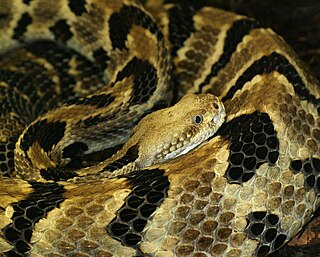Related Research Articles

In taxonomy, binomial nomenclature, also called binominal nomenclature or binary nomenclature, is a formal system of naming species of living things by giving each a name composed of two parts, both of which use Latin grammatical forms, although they can be based on words from other languages. Such a name is called a binomial name, a binomen, binominal name or a scientific name; more informally it is also called a Latin name.

Moles are small mammals adapted to a subterranean lifestyle. They have cylindrical bodies, velvety fur, very small, inconspicuous ears and eyes, reduced hindlimbs, and short, powerful forelimbs with large paws adapted for digging.

Oryza is a genus of plants in the grass family. It includes the major food crop rice. Members of the genus grow as tall, wetland grasses, growing to 1–2 m tall; the genus includes both annual and perennial species.

Buxus is a genus of about 70 species in the family Buxaceae. Common names include box or boxwood.

The Crotalinae, commonly known as pit vipers, crotaline snakes, or pit adders, are a subfamily of venomous vipers found in Eurasia and the Americas. They are distinguished by the presence of a heat-sensing pit organ located between the eye and the nostril on both sides of the head. Currently, 22 genera and 151 species are recognized: These are also the only viperids found in the Americas. The groups of snakes represented here include rattlesnakes, lanceheads, and Asian pit vipers. The type genus for this subfamily is Crotalus, of which the type species is the timber rattlesnake, C. horridus.

Murraya is a genus of flowering plants in the citrus family, Rutaceae. It is distributed in Asia, Australia, and the Pacific Islands. The center of diversity is in southern China and Southeast Asia.

Struthio is a genus of birds in the order Struthioniformes, whose members are the ostriches. It is part of the infra-class Palaeognathae, a diverse group of flightless birds also known as ratites that includes the emus, rheas, and kiwis. There are two living species of ostrich, the common ostrich and the Somali ostrich. They are large flightless birds of Africa who lay the largest eggs of any living land animal. With the ability to run at 70 km/h (43.5 mph), they are the fastest birds on land. It is farmed worldwide, particularly for its feathers as they are used as decoration and feather dusters. Its skin is also used for leather products.
Lonchognathosaurus was a genus of dsungaripterid pterodactyloid pterosaur from the Albian-age Lower Cretaceous Lianmuqin Formation of Xinjiang, China.

Altmuehlopterus is a genus of pterosaur belonging to the Pterodactyloidea. It lived in the Late Jurassic of what is now Germany. It was formerly known as "Daitingopterus", a nomen nudum, informally coined in 2004.

Ilex, or holly, is a genus of about 480 species of flowering plants in the family Aquifoliaceae, and the only living genus in that family. The species are evergreen or deciduous trees, shrubs, and climbers from tropics to temperate zones worldwide. The type species is Ilex aquifolium, the common European holly used in Christmas decorations and cards.
Gobiops is an extinct genus of temnospondyl from the Jurassic of Mongolia, China, and possibly Kyrgyzstan. The genus is represented by a single species, Gobiops desertus. It was named in 1991 from the Late Jurassic Shar Teeg Beds of Mongolia. Additional material was described in 2005 from the Middle Jurassic Toutunhe Formation in the Junggar Basin of China. Gobiops belongs to the family Brachyopidae. The poorly known genus Ferganobatrachus, named in 1990 from Shar Teeg, is probably synonymous with Gobiops.
Gargela is a genus of moths in the subfamily Crambinae of the family Crambidae. The genus currently comprises 22 Austral-Asian species, of which the majority has been described in recent years. Many species remain to be described, with their total number probably being around 40 species.

The Catostomidae are the suckers of the order Cypriniformes, with about 78 species in this family of freshwater fishes. The Catostomidae are almost exclusively native to North America. The only exceptions are Catostomus catostomus, found in both North America and Russia, and Myxocyprinus asiaticus found only in China. In the Ozarks they are a common food fish and a festival is held each year to celebrate them. Ictiobus cyprinellus can reach an age up to 112 years, making it the oldest known freshwater teleost.

Pelodiscus is a genus of turtles in the family Trionychidae, the softshells. Based on genetic and morphological analysis there are five valid species. They are native to Eastern Asia, ranging from the Amur region, through China, Korea and Japan, to Vietnam.
Etielloides kogii is a species of snout moth in the genus Etielloides. It was described by Hiroshi Yamanaka in 1998 and is known from China and Japan.
Etielloides sejunctella is a species of snout moth in the genus Etielloides. It was described by Hugo Theodor Christoph in 1881 and is known from China, Japan and the Russian Far East.
Wangosaurus is an extinct genus of basal pistosauroid known from the Middle Triassic Falang Formation of Xingyi in Guizhou Province, southwestern China. It contains a single species, Wangosaurus brevirostris, first described and named by Le-Tian Ma, Da-Yong Jiang, Olivier Rieppel, Ryosuke Motani and Andrea Tintori in 2015. The specific name brevirostris comes from Greek for "short snout". It is known solely from its holotype, a nearly complete and articulated skeleton missing only the rear part of its tail.
Majiashanosaurus is an extinct genus of pachypleurosaur or alternatively a basal eosauropterygian known from the Early Triassic of Anhui Province, eastern China. It contains a single species, Majiashanosaurus discocoracoidis.
Icriodus is an extinct conodont genus in the family Gnathodontidae.
Beipiaognathus is a dubious genus of coelurosaurian theropod from the Early Cretaceous Yixian Formation of Liaoning, China.
References
- ↑ Nuss, Matthias; Landry, Bernard; Vegliante, Francesca; Tränkner, Andreas; Mally, Richard; Hayden, James; Segerer, Andreas; Li, Houhun; Schouten, Rob; Solis, M. Alma; Trofimova, Tatiana; De Prins, Jurate & Speidel, Wolfgang (2003–2011). "GlobIZ search". Global Information System on Pyraloidea. Retrieved September 29, 2011.
- ↑ "A Taxonomic Review Of The Genus Etielloides Shibuya (Lepidoptera: Pyralidae: Phycitinae) From China, With Description Of A New Species". So.med.wanfangdata.com.cn. doi:10.1179/174591906X95987 . Retrieved 2012-01-17.
| This Phycitinae-related article is a stub. You can help Wikipedia by expanding it. |